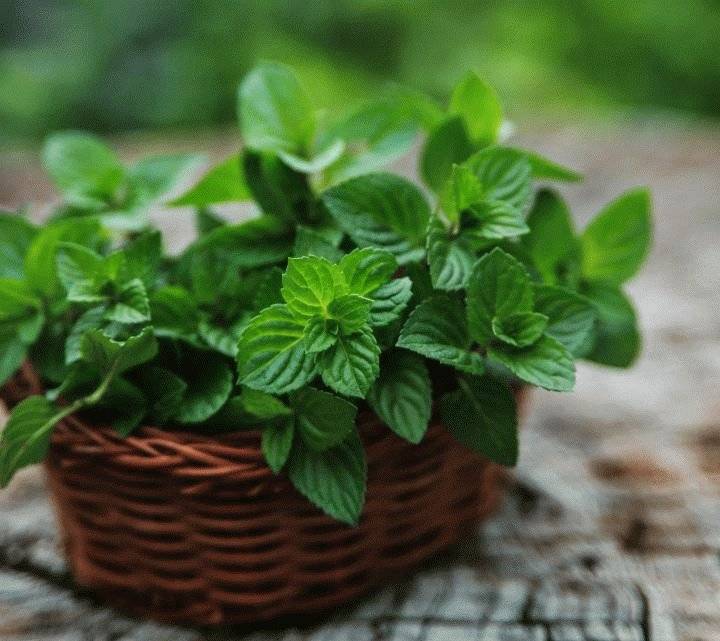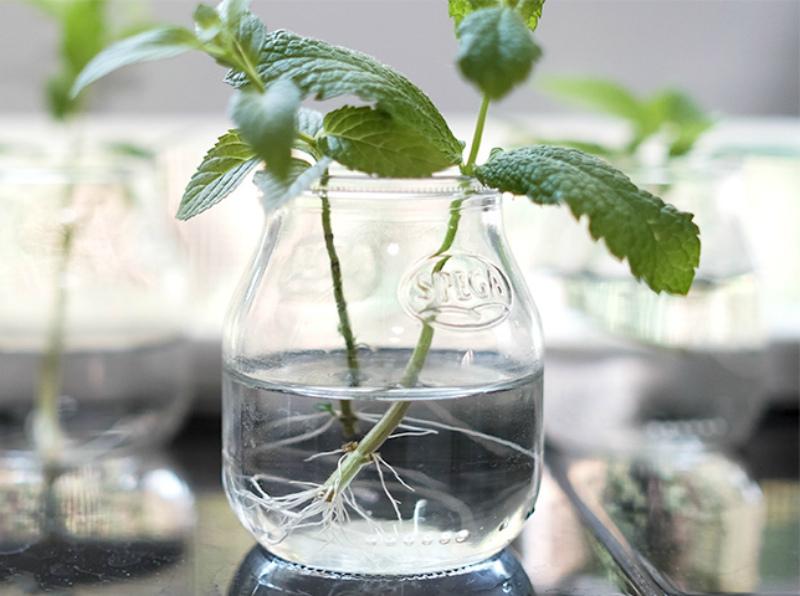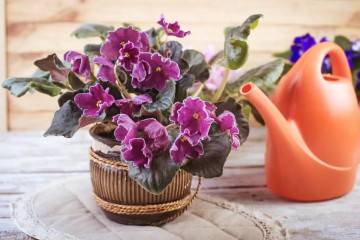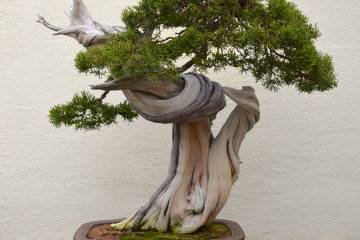How to grow mint at home on a windowsill from seeds
Content:
Mint is a popular herb with a refreshing taste and aroma that is brewed as a tea or added to desserts. Most often, mint is bred in the garden, allowing you to collect leaves during the entire warm period. If you want to drink a refreshing mint drink in winter, you can brew dried leaves or plant mint on the windowsill as a houseplant. How to grow mint at home on a windowsill, the article below will tell you.
Home cultivars
Mint does not require special conditions for normal growth, so almost all varieties can be grown at home on a windowsill. The most popular are:
- Pearls differ from other varieties with wrinkled dark green leaves and rich spicy aroma.
- Fun is used to prepare savory dishes, giving them a light refreshing, menthol flavor, which is why it is often called vegetable mint.
- Strawberry mint has a pronounced strawberry-mint aroma, in which notes of chocolate sometimes slip. Ideal for sweet lovers as a tonic tea and flavoring desserts.
- Lemongrass or lemon balm has a characteristic citrus-mint aroma. It is considered the most susceptible to fungal infections, wasting away in excessively moist soil.
- Plectranus, another name for room mint, which has a spicy aroma that repels room moths. With the help of decoctions from this variety, they get rid of respiratory diseases.
- Flea mint looks like a miniature bush that prefers warmth and sun. The leaves of the plant are used as a seasoning for cooking. Light refreshing aroma repels various insects during the warm season.
- Kuban is one of the varieties of peppermint with a rich, harsh aroma due to the large amount of essential oils in the foliage.
How to plant mint at home
To plant mint in a pot, 2 methods are used: sowing with seeds and cuttings. The second method will allow you to get an adult plant in a shorter time compared to sowing seeds, but if you start planting seeds in advance, you can get the first harvest in the required time frame.
If mint is already growing on the territory of the garden plot, then in the fall you can dig out a bush and transplant it into a container of a suitable size. Before planting in a pot, it is recommended to thoroughly clean and rinse the roots from the ground. In the same way, an adult plant can multiply; you just need to divide the root system into several parts.
The soil
It is recommended to grow spicy grass in loose humus or peaty soil with an average acidity level (no more than 5-6 pH).
A soil mixture with such parameters is purchased in a specialized department or made by yourself in the following proportions:
- Garden soil, rotted humus, coarse sand and peat are mixed in equal parts.
- Less nutritious, suitable in composition is a mixture of 2 parts of garden soil and 1 part of peat.
The soil mixture is poured into a wide, at least 20 cm in diameter, shallow container, since the spice grows in width during normal development, deepening the roots far into the ground.
Place and conditions for growing
Before growing mint, you need to decide on a place. Mint is a light-loving plant, so a window sill in the southern part of the house, including the southwest and southeast, would be an ideal place to grow. Without enough sunlight, mint is strongly stretched, the foliage becomes smaller and loses its brightness.
Despite the love of light, the leaves can suffer from direct midday sunlight. To reduce the risk of sunburn, it is recommended that the bushes be moved to other windowsills, for example, in the eastern or western part of the house, or shaded by covering the glass with fabric curtains and covering the plant with a plastic bucket.
Throughout the year, it is recommended to maintain the duration of daylight hours for 12-16 hours, using one or more phytolamps. Artificial lighting is especially important in the autumn-spring period, which is characterized by short daylight hours.
If for some reason it is not possible to extend the daylight hours with the help of artificial lighting, it is recommended to lower the air temperature in the apartment to 15-18 ° C, which will prevent the plant from pulling the stems and shrinking the foliage.
Mint on the windowsill: growing from seed
The seeds are purchased from a specialized department or harvested by hand.
2-4 days before sowing, it is recommended to germinate the seeds in a damp cloth or bandage. To maintain the level of temperature and heat during germination, it is convenient to place the soaked seeds in a tightly closed container, for example, a glass jar with a lid.
To harvest the first crop in the first weeks of summer, you need to plant seeds in March - early April. Sprouted seeds are carefully placed on the surface of a moistened soil mixture, sprayed with water and covered with a thin layer of soil.
Before planting, the container and soil must be disinfected with a disinfectant solution, calcined in the oven or steamed in order to avoid contamination of future seedlings with various infections.
The container with crops is covered with a glass lid of a suitable size or cling film to maintain the required temperature. The covered container is removed to a warm, bright place.
The crops are ventilated daily for 10-20 minutes. After about 8-20 days, the first shoots appear, after which the cover can be removed and the young plants can be transplanted into new containers.
How to grow mint from cuttings at home
As a cutting, 10-centimeter sprigs of mint are suitable, cut at an angle of 45 degrees, from which the lower leaves must be removed.
The cuttings are dipped in a glass of water for 3-8 days until the roots appear, after which they are planted in the prepared soil. To create greenhouse conditions, the cuttings are placed under a glass or plastic cover.
For purchased seed, before rooting, it is recommended to update the sections and only then place it in water.To accelerate the germination of roots, a drug that stimulates root formation can be added to the water.
How to care after landing
Mint is a heat-loving plant, to maintain normal growth and development, it is rearranged, if necessary, from one place to another in order to maintain a temperature of 20-26 ° C. Moving the mint in the pot at home helps to protect the delicate leaves from the sunburn of the midday sun.
In summer, the mint pot is kept on the balcony or covered veranda. In the heat, a container with water is installed near the plant, the evaporation of which allows maintaining the required level of air humidity.
In the winter months, it is better to remove mint from the windowsills, as low temperatures will penetrate through the window, which will have a detrimental effect on the plant. The optimum temperature during the cold season is 17-20 ° C.
Watering
Mint on the windowsill prefers regularly moist soil, which should not be overdried and poured over.
Watering rules:
- In the warm season, the plant is watered with a small amount of water every 2-3 days after the top layer of the soil has completely dried. Excess moisture flows into the pan, from which it must be drained to prevent the development of putrefactive processes in the roots.
- During the heating season, the frequency of watering is reduced to 1 time in 7 days at an air temperature within the normal range (17-23 ° C).
- Regular spraying is recommended to remove dust particles from foliage.
- Water for irrigation and spraying should be settled for 3-4 days, at room temperature.
Top dressing
To maintain the level of beneficial microelements in the leaves, fertilize mint once at home in the summer with an aqueous solution of urea (1 g of fertilizer per 1 liter of water).
During the period of leaflet formation in young plants, moderate fertilizing with mineral fertilizers is allowed, the dosage of which, indicated on the package, decreases several times. Fertilizing plants in winter is highly discouraged.
Harvesting
Depending on the planting method, mint is grown within 30-90 days.
As soon as the stems reach a length of 15-18 cm, the mint can be cut, observing the following guidelines:
- To stimulate the growth of lateral branches, leaves are cut off, growing at a distance of 1.5-3 cm from the stem.
- Long stems are cut by no more than a third, since a cut at the root can provoke a growth arrest.
- Blooming mint redistributes all the nutrients from the bush to the inflorescences, so during this period it is recommended to cut off the tops 1-2 cm above the branching point of the main and lateral stems.
The cut crop is stored in a refrigerator in a container with holes for ventilation, frozen or dried in the shade in the air.
Possible problems
Often, due to improper care, mint becomes covered with dark rusty spots, the appearance of which can provoke excessive moisture in the soil and air, lack of heat, drafts, and excess nitrogen in the soil. The damaged parts of the plant are cut off, the rest are sprayed with fungicides. The processed greens are soaked in cold water for at least half an hour before use.
Transplanting a plant from a garden plot into a pot without first washing the roots can provoke infection with various diseases. One of the most common is mealy growth, covering the leaves with a whitish bloom. Spraying with a 1% solution of colloidal sulfur allows you to get rid of a fungal infection.
Planting in untreated soil can provoke damage to such small insect pests as mint flea, scale insect, mint mites and leaf beetles, leaving behind gnawed leaves in several places.
You can brew refreshing, tonic tea and prepare fragrant desserts with fresh mint leaves all year round by growing mint at home in a pot on a windowsill. The main thing is to provide it with regular moderate watering and a sufficient amount of heat and light.






















